LG 29EA93 Monitor Review - Rev. 1.25
by Chris Heinonen on February 12, 2013 8:49 PM ESTLG also offers its own hardware and software calibration package for the 29EA93. Using a custom designed colorimeter, the hardware and software only work with LG monitors but are scheduled to sell for less than competing products from XRite and Datacolor. I mentioned earlier in the review that colorimeters are prone to errors on displays with LED backlights like the LG. This is a general rule, but since LG knows the spectral response of their displays they can program that into their own colorimeters, leading to much better results than a generic colorimeter. It usually won’t be as good as a meter profiled with a spectrometer due to sample variations, but it will be much better than without.
Using their own software and probe, I calibrated the display to the same settings I use: 200 cd/m² and a gamma of 2.2. An sRGB gamma curve is not supported, nor are colorspaces larger than sRGB with this version, but on their professional monitors with a more advanced meter, different colorspaces are supported. The process is very simple: You choose your targets, it will pop up a spot for the calibration puck on screen, and then you let it run the calibration. The process locks the monitor OSD controls as it adjusts it automatically, and then at the end it will create an ICC profile for you and install it.
To evaluate this profile, I again used CalMAN and used the same set of images that we use for our smartphone and tablet testing. Using the automated test pattern generator in CalMAN wasn’t possible, as it would attempt to load its own ICC profile and change the setting in the display. On first look, we see 197.3 cd/m² of light output and 0.19 cd/m² on a black screen for a contrast ratio of 1039:1. This wasn’t as good as I was able to achieve using CalMAN, which might indicate that it is obtaining the peak-white level differently. With CalMAN I could use the Contrast and Brightness controls to get just above 200 cd/m², allowing maximum headroom to adjust the curves to get accurate color. The LG software might not bring these down as much, and then bring down the RGB curves even more, which would lower headroom compared to the other method.
Our CCT average is 6415, but a look at the RGB balance shows that it starts out very good but then drifts a little towards the warmer, redish tint that the CCT reflects. Gamma is almost spot on at 2.21, save for a dip at 5% that most people won’t catch as they only measure in 10% increments. The dE2000 values follow the RGB balance as well, starting out very low but eventually drifting up to a level where a reddish tint will be slightly visible. The average dE2000 for the grayscale is 2.09, a number that is decent but not as good as CalMAN was able to achieve.
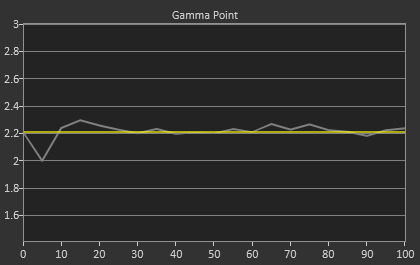
Looking at the Saturations and Color Checker charts, we see improvements but not to the degree that CalMAN allows. Our Color Checker dE2000 is 1.96, but with higher grayscale errors as well as larger errors in the over-saturated colors of red, yellow, and green. Blues also exhibit a bit of over-saturation as well, indicating that the LG sensor isn’t quite as sensitive as the C6 colorimeter, since blue is harder to read.
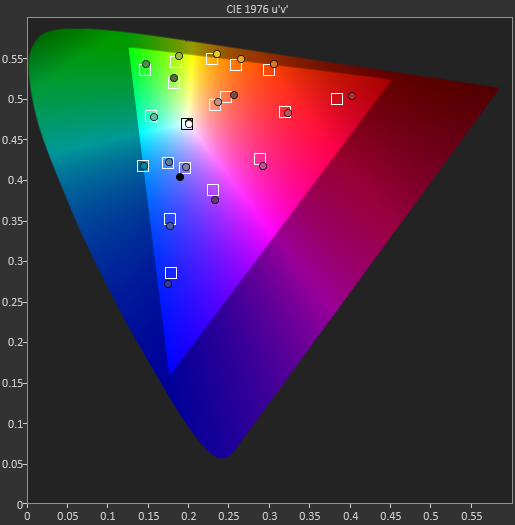
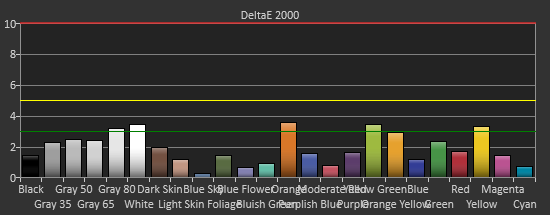
On the saturations data, we see that the Red/Yellow/Green side of the triangle has larger and larger errors as those colors get more saturated. With the over-saturated gamut, this is what we expect to see. Unfortunately none of the calibration software seems to be able to fully pull those points in and correct the over-saturated gamut there, leaving a bit of an error. The overall error is still fairly low, and with most colors not being fully saturated, that over-saturated error isn’t really bad, but better results were obtained with the CalMAN software.
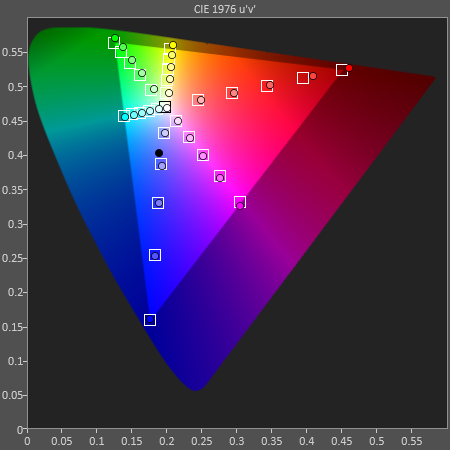
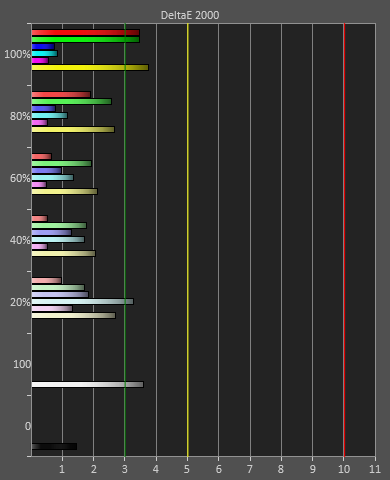
Overall the LG software and hardware solution does do a decent job, but it can’t compete with what is possible using CalMAN with better hardware. Of course, the CalMAN solution with a C6 and i1Pro meter retails for closer to $2,000 than $100, so they are very different spectrums of performance. For $100, I would say the LG results are quite good and will satisfy those that aren’t graphics or video professionals most likely. Just the superior gamma will make a large difference when viewing thanks to the superior dynamic range.








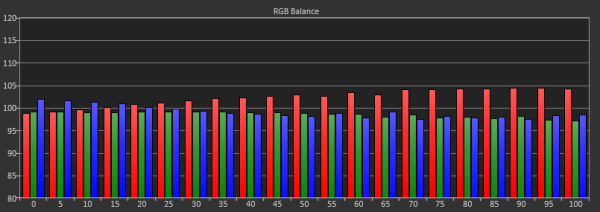
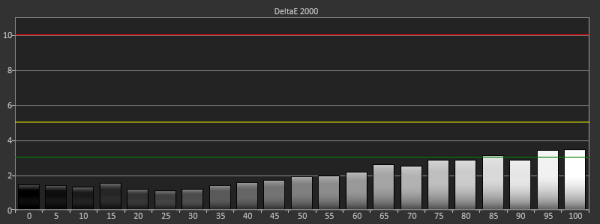








108 Comments
View All Comments
cheinonen - Wednesday, February 13, 2013 - link
On every recent LED in house I've tried to test for PWM, but all photographs wind up with a solid line which indicates one of two things:- No PWM
- I'm doing it wrong
Believe me, I'm testing it, but unless I can get a positive result to ensure that the testing method is correct, I am not confident to state for a fact that a display does or does not feature it.
paradeigmas - Wednesday, February 13, 2013 - link
Thank you for the most useful and insightful review. Do you think you would be able to review the new ASUS MX299Q which is sold at a significantly lower price point ($599) than the LG29EA93? That would be tremendously helpful in determining which one to buy.99sport - Wednesday, February 13, 2013 - link
It makes absolutely no sense to me that LG would sell a home calibration kit (that only works with one particular model of monitor) for $100-$150. For that money, why wouldn't LG calibrate the display at the factory? That would save me the hassle of doing the calibration myself and LG wouldn't have to stock, ship and support the calibration kit, which I would only need once or twice in my lifetime.I have some experience doing display calibration, and my next monitor purchase will be a factory calibrated Dell (if I had a Mac it would be a factory calibrated Apple display). For those interested, the process of calibrating my Samsung TV consisted of buying the colorimiter for $150, finding and burning a BluRay of the test patterns (need a BlyRay burner for this), downloading the calibration software, and then figuring out what all the terms mean and how to do the calibration. Unfortunately, display calibration is highly iterative as changing one setting often upsets others. Plus the calibration is never perfect, so you are constantly trading one parameter for another - hoping to maximize as many parameters as possible. In the end, I was able to achieve a very good result, and this saved me from returning the TV (I was very disappointed in the color accuracy before calibration), but I spent three days figuring out what I was doing and then iterating a number of times - Like I said earlier, I would gladly pay $100 to be able to take the display out of the box and use it knowing the factory achieved an acceptable baseline. I assume LG's product is much more of a point and click affair then what I used, but that would mean it would be that much easier for them to do in house. They could even have a separate SKU for those willing to pay more for factory calibration.
Spoelie - Wednesday, February 13, 2013 - link
Calibration is dependent on the device outputting the video signal. You could calibrate your TV perfectly for your bluray player, but have it completely miss the spot when connecting your xbox (or whatever). That's why each input will have its own settings on a "sane" TV.Some calibration can already be done in the factory though, that's true, it just won't be perfect. Panasonic does this with their G-range (and up) televisions, called THX-Cinema mode. See http://www.hdtvtest.co.uk/news/panasonic-tx-p50gt5...
cheinonen - Thursday, February 14, 2013 - link
You can go back and read some of my comments about the meter and how they likely build in profiles to account for the spectral signature of the LED backlighting.With a $100 colorimeter, like the i1Display2 or a Spyder, the simple fact is they are decent at what they do, but they drift relatively fast, and they work best on CCFL or CRT based displays. LED based LCDs and other lighting systems typically don't work well on them. The issue is that when using software to do the calibration, neither one of those items knows if the meter is reading correctly or incorrectly. Without verification by a spectrometer, you'd have no idea.
The human eye is also very adaptable to what we see in front of us, and we adjust very fast. Whatever the brightest white is, we take that to be pure white and adjust from that. If a display is 9300K or 4500K instead of 6500K, I can typically spot that. If it's 6200K or 6800K and there is no 6500K reference in the room, your eye is going to adapt to that being correct.
If they can program their meter to work better with their displays than the XRite or Datacolor solutions, and sell it for less, then for many people it's going to work fine. Calibrating at the factory adds time and money that many people don't care about unfortunately. For people like myself, we might pay the extra $100 for it, but for many people that $100 would mean they buy a different display. Multiple SKUs also make vendors and dealers unhappy, as it's more inventory to track and they'd rather just carry a calibration device.
99sport - Wednesday, February 13, 2013 - link
I want to thank AnandTech for being one of a few websites that check greyscale and color performance of displays - this site does an outstanding and thorough job. However, I agree with many other posters who believe this follow up test should be of a retail unit.As I understand it, some manager at LG read your previous review and then ordered his engineers to improve the display and have it retested. As an engineer who worked in a large corporation for many years, it is unthinkable to me that LG would pull a display off the assembly line and send it to you without first verifying it's performance. It would be a great way for the person given the task of improving the display to get fired if the second review does not live up to whatever goals LG management had. My hunch is that they either pulled a number of samples off the line, checked their performance and sent the best one, or took a random unit and then tweaked it to achieve the performance goals they were after.
While it may be cost prohibitive to purchase every device tested on this site, this is clearly a case where the lack of a store bought sample casts doubt on the validity of the results.
flamefox777 - Wednesday, February 13, 2013 - link
No Gold award?Is this "the" gaming and movie-watching monitor out right now?
Am I 100% absolutely certain to get this new revision if I order from Amazon or Newegg?
xaueious - Wednesday, February 13, 2013 - link
Can you provide information on where you can tell the difference between the two?Also, there's a typo on the first page '28EA93'?
DelphiOracle - Thursday, February 14, 2013 - link
I would be very suspicious of any piece of hardware delivered for review with an company engineer. I suggest re-evaluating the monitor using a retail version. It is all too easy (and tempting) for the company to deliver a piece of hardware that has been screened and tweeked by the gift bearer!Wolfpup - Thursday, February 14, 2013 - link
And surprising! I'm more used to companies just ignoring things, never responding, or worse. Really cool to see they were so awesomely responsive and fixed it!Will make me less nervous about buying an LG monitor or display...